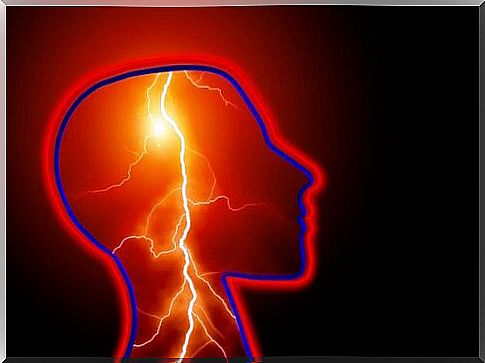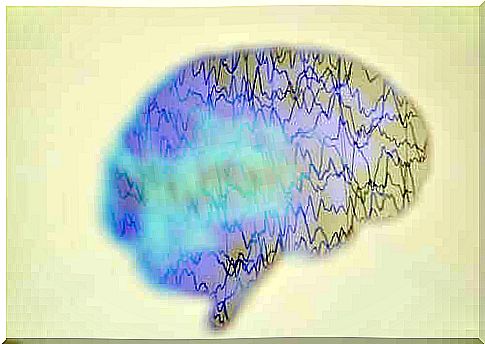Epileptic Crisis: What It Is And How To Act

In our society, the epileptic crisis is traumatic for many due to ignorance of the measures that can be taken. The epileptic crisis can be avoided or controlled. In this article, we’ll tell you more about it.
According to statistics, 3% of the population will suffer from at least one epileptic crisis in their lifetime. Therefore, it is a very common disease and is the second neurological cause of which people go to the emergency room.
Epilepsy is a chronic, non-infectious brain disease that affects people of all ages. In addition, around 50 million people worldwide suffer from it, and around 80% of patients live in low and middle income countries.
We’ll explain what an epileptic crisis is and how you can keep a person safe until the seizure ends by itself.
What is an epileptic crisis?
By definition, an epileptic crisis is a collection of diverse symptoms. From those that may go unnoticed to what we popularly call seizures: generalized body spasms with loss of consciousness.
Interestingly, these symptoms are due to the fact that a group of neurons in our brain decide to activate simultaneously and become overactive and abnormal. We can distinguish two types of epileptic seizures:
- Acute symptomatic seizure: An injury to the outside or inside of our brain causes a crisis. Brain injury, cerebrovascular disease, brain infection, fever, poisoning, or an imbalance of salt and sugar in the blood can cause this type of crisis.
- Unprovoked seizures: Commonly known as epilepsy. 6 out of 10 people with seizures are caused by epilepsy for no identifiable cause.
According to the International League Against Epilepsy (ILAE), epilepsy is a change in the brain that predisposes a person to more than one seizure in a lifetime. This has ramifications on the neurological, psychological and social levels. This means that we can all have seizures, but not everyone will develop epilepsy.

Epileptic crisis: types, signs and symptoms
First of all, you should know that there are two main types of seizures: generalized seizures and partial or focal seizures.
General crisis
Unfortunately, abnormal activity occurs throughout the brain and usually leads to unconsciousness:
- Absence: usually occurs in children and adolescents. The person loses consciousness for a few seconds, without any other clinical symptoms, usually unresponsive, disconnected from the environment. He does not lose consciousness or has muscle cramps. They just stop what they’re doing and shut down.
- Myoclonic seizures: This type of generalized crisis does not cause unconsciousness. These are muscle spasms in the limbs, usually both hands.
- Tonic seizure : This occurs as a single sudden tonic spasm. The body becomes as stiff as a blackout board.
- Tonic clonic seizure : This is what we usually associate with a seizure. First comes the tonic contraction phase, followed by myoclonic contractions. It is always accompanied by a loss of consciousness. Often the side of the tongue is gnawed and the sphincter relaxes. Usually it takes 1 to 2 minutes followed by a period of several minutes of turmoil.
Partial or focal seizures
In this case, the abnormal activity only occurs in a specific group of neurons. Depending on the affected area, we have certain symptoms, for example, visual and olfactory hallucinations, trembling in one hand.

Seizures can be generalized or focused.
How to proceed?
If we are witnessing an epileptic crisis, the following steps should be taken:
- Carefully put the person down on the ground or in an area that is free from hard or sharp objects. The head should be smooth and flat on something.
- You need to turn the person sideways to improve the dynamics of breathing.
- Loosen any objects that may be around your neck as they are dangerous to move.
- Stay with that person until the crisis is over.
What should we not do?
It is also important to know what precautions should be taken so as not to make mistakes that complicate the condition of a person. Attempting resuscitation is not a priority.
Do not hold a person during a seizure or put objects into their mouths to try to grasp the tongue. Ideally, during a crisis, the sick person should be turned on their side to avoid swallowing their tongue.
Also, do not give the person food or liquids immediately afterwards. At least until we confirm that the victim is fully aware.









